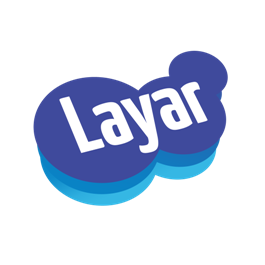 Layar, one of the first companies to start popularizing the concept of augmented reality browsing using modern day’s mobile phone cameras, is today announcing the addition of 3D capabilities to its AR browser platform for Android and will be demoing the experience starting tomorrow at the Picnic Conference in Amsterdam, the Netherlands.
Layar, one of the first companies to start popularizing the concept of augmented reality browsing using modern day’s mobile phone cameras, is today announcing the addition of 3D capabilities to its AR browser platform for Android and will be demoing the experience starting tomorrow at the Picnic Conference in Amsterdam, the Netherlands.
With 3D, third-party developers can now tag real-life objects with three-dimensional text, place 3D objects on top of real-world space and create multi-sensory experiences. The general idea behind the addition of 3D capabilities to Layar is to encourage developers to create more realistic and immersive augmented reality browsing experiences for mobile devices.
This in turn should further the overall adoption of the much-hyped technology.
The first demonstration of the Layar 3D experience will be at creativity festival Picnic in Amsterdam from September 23-25. The event’s attendees looking for “Picnic” in the Android Market can find and download an application to any Android-powered phone and view a virtual exhibition that delivers a multi-sensory experience of real life. They will experience a jumbo jet flying by, a rocket launch, and find themselves in the middle of an arcade game – all including sound. Conference buildings will be found tagged with 3D texts and on the lawn several 3D objects are placed, such as windmills and 3D “experience domes”.
You can view videos and images of the demo here, and we’ve embedded some below. Granted, the graphics are fairly clunky, but imagine the potential for the future.
So how does it work?
Layar 3D uses OpenGL, the accelerometer, the GPS and the compass of the Android phone. Developers can place 3D objects in their content layers based on coordinates, which can be optimized in size and orientation and enhances with actionable items such as ‘open link’ or ‘play music’ in order to create a realistic experience. The 3D capabilities support live downloading and rendering of 3D objects.
Together with selected partners, Layar will update their API to support 3D objects for new and existing layers. Layar will launch 3D to the public in November together with the launch of version 3.0 of the Layar Reality Browser for Android.
I asked Layar’s Raimo Van Der Klein about the adoption of the app by Android phone owners and the API by third-party developers. Van Der Klein informed me that the Android application has currently been downloaded over 100,000 times, and that out of 800 requested API keys, about 500 developers are actively making use of it today.

